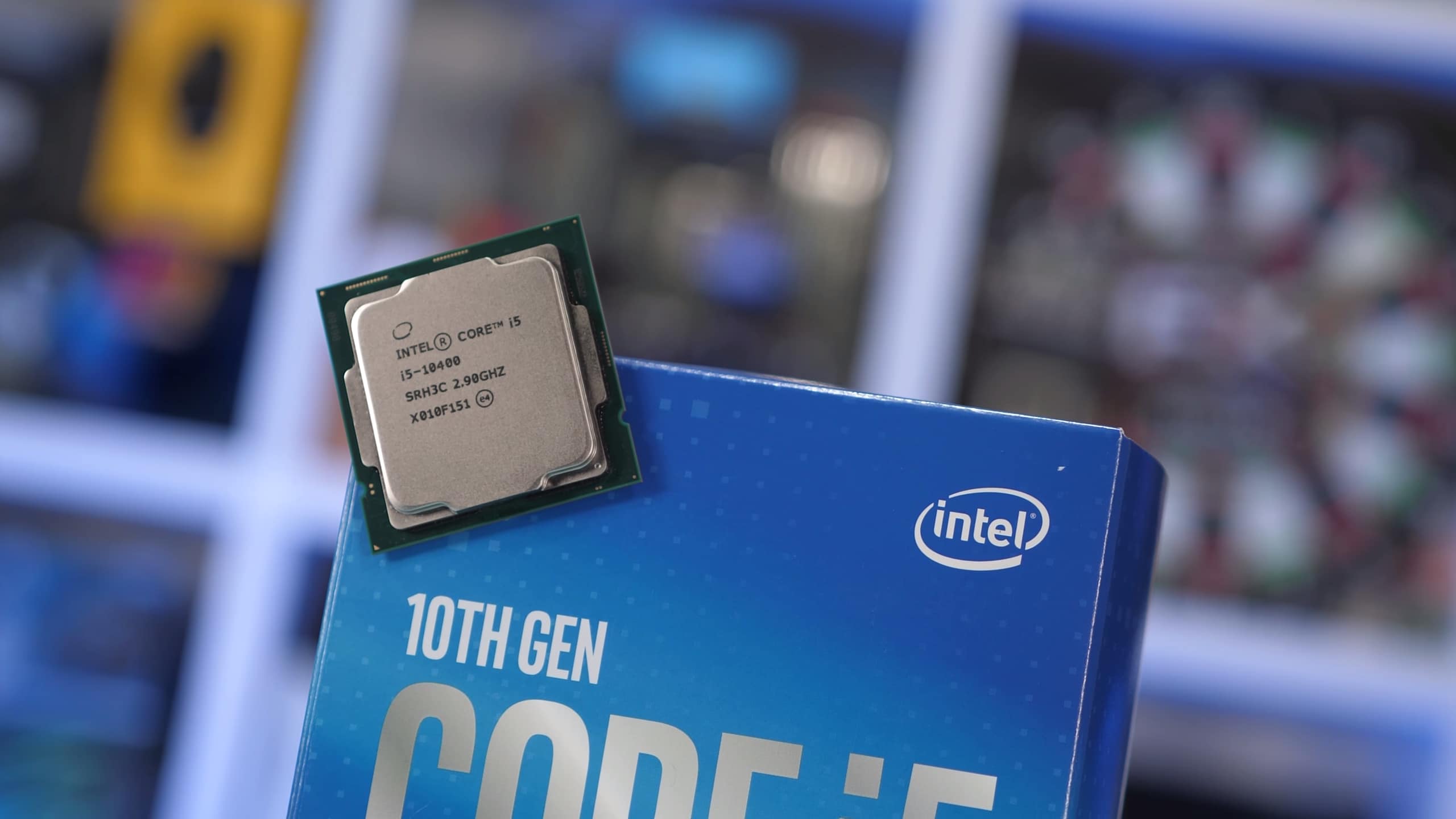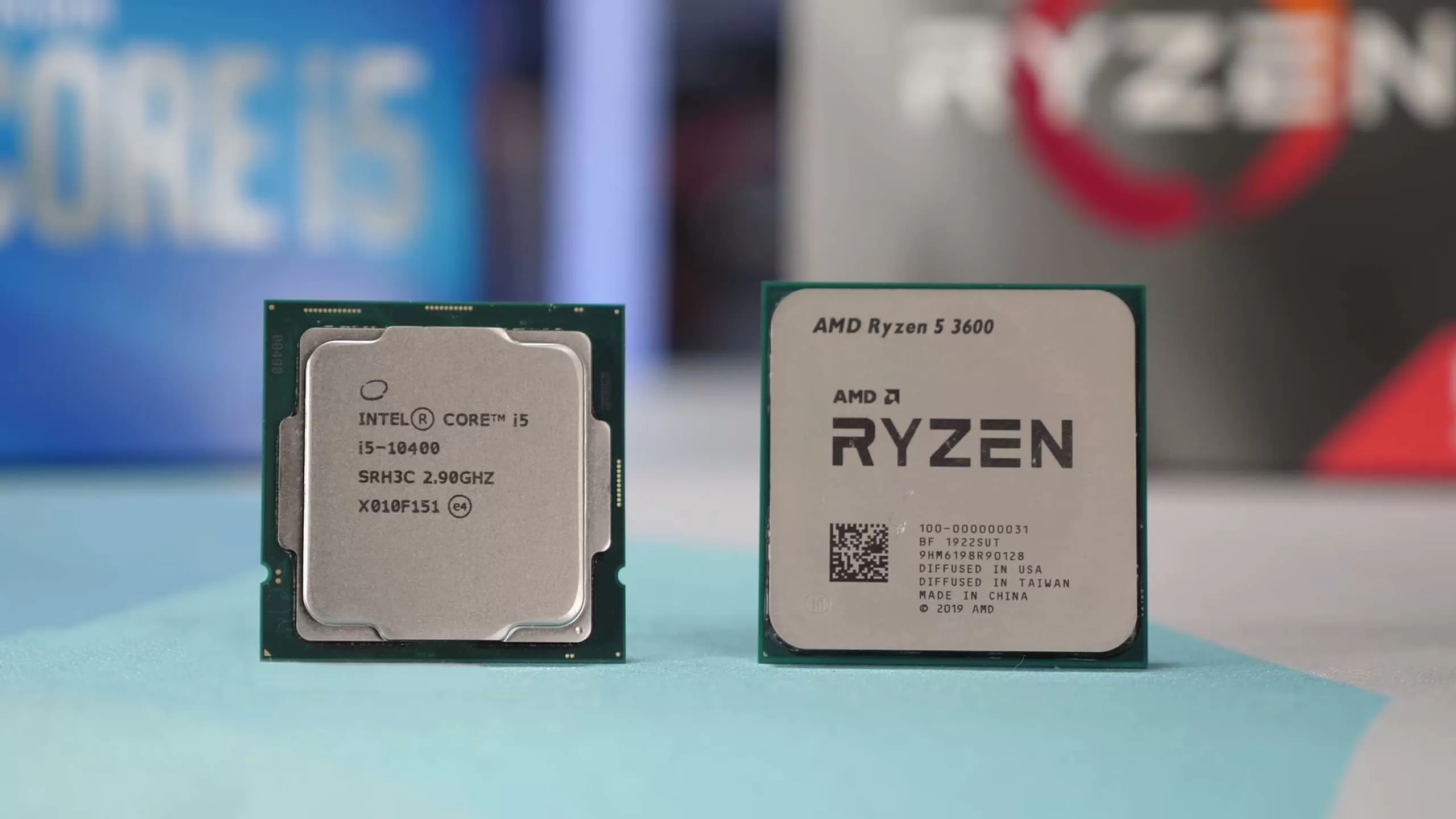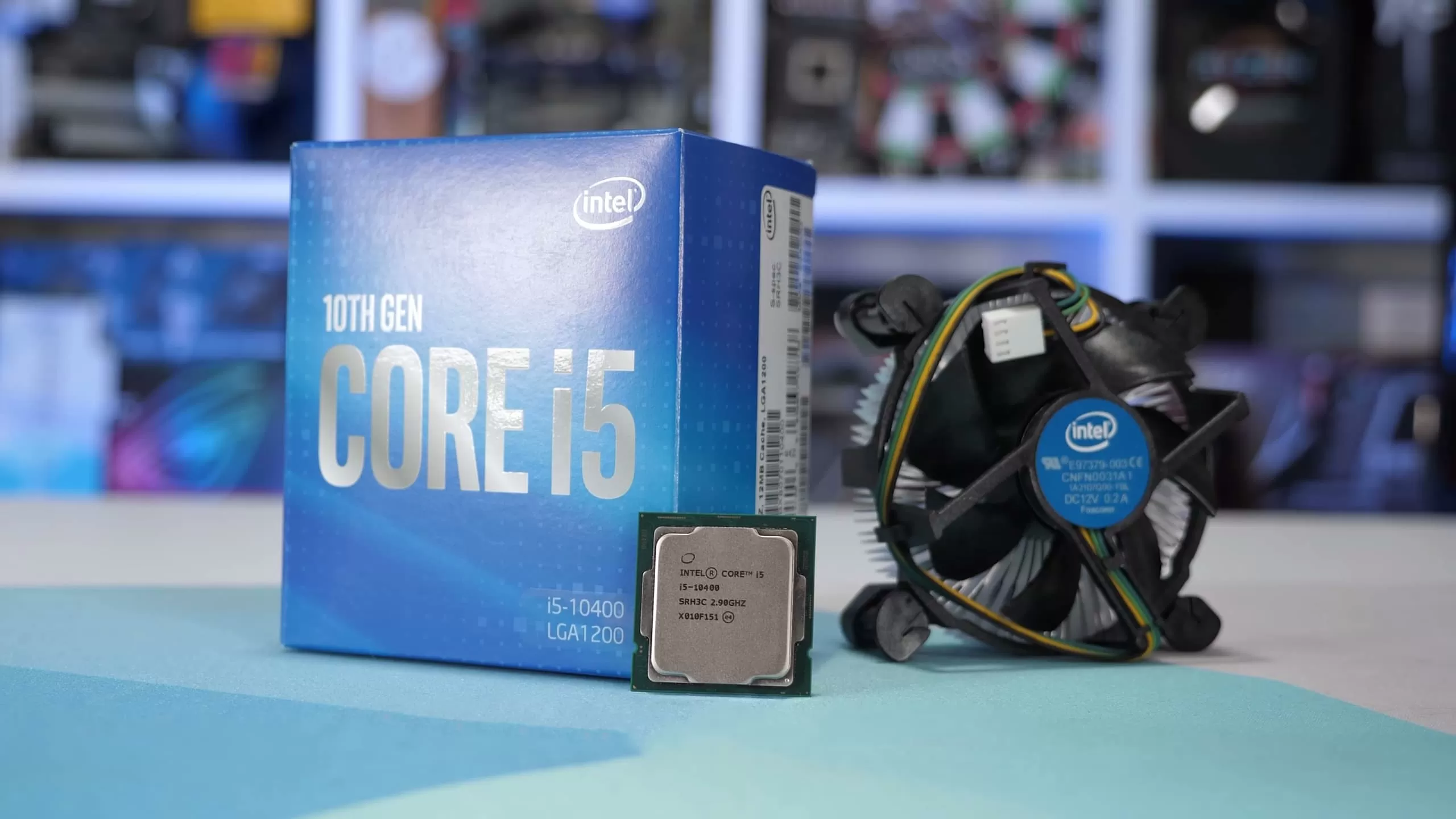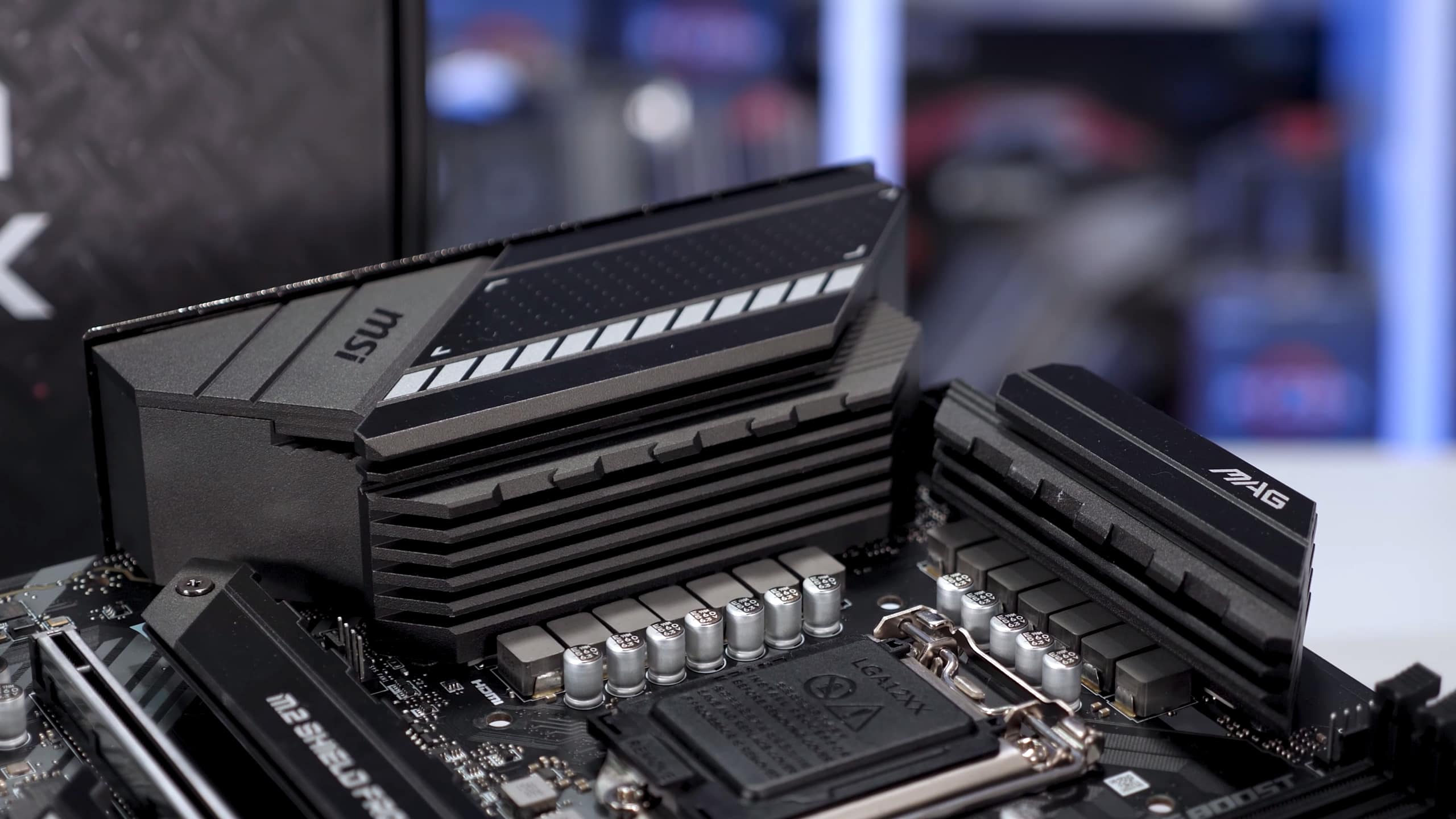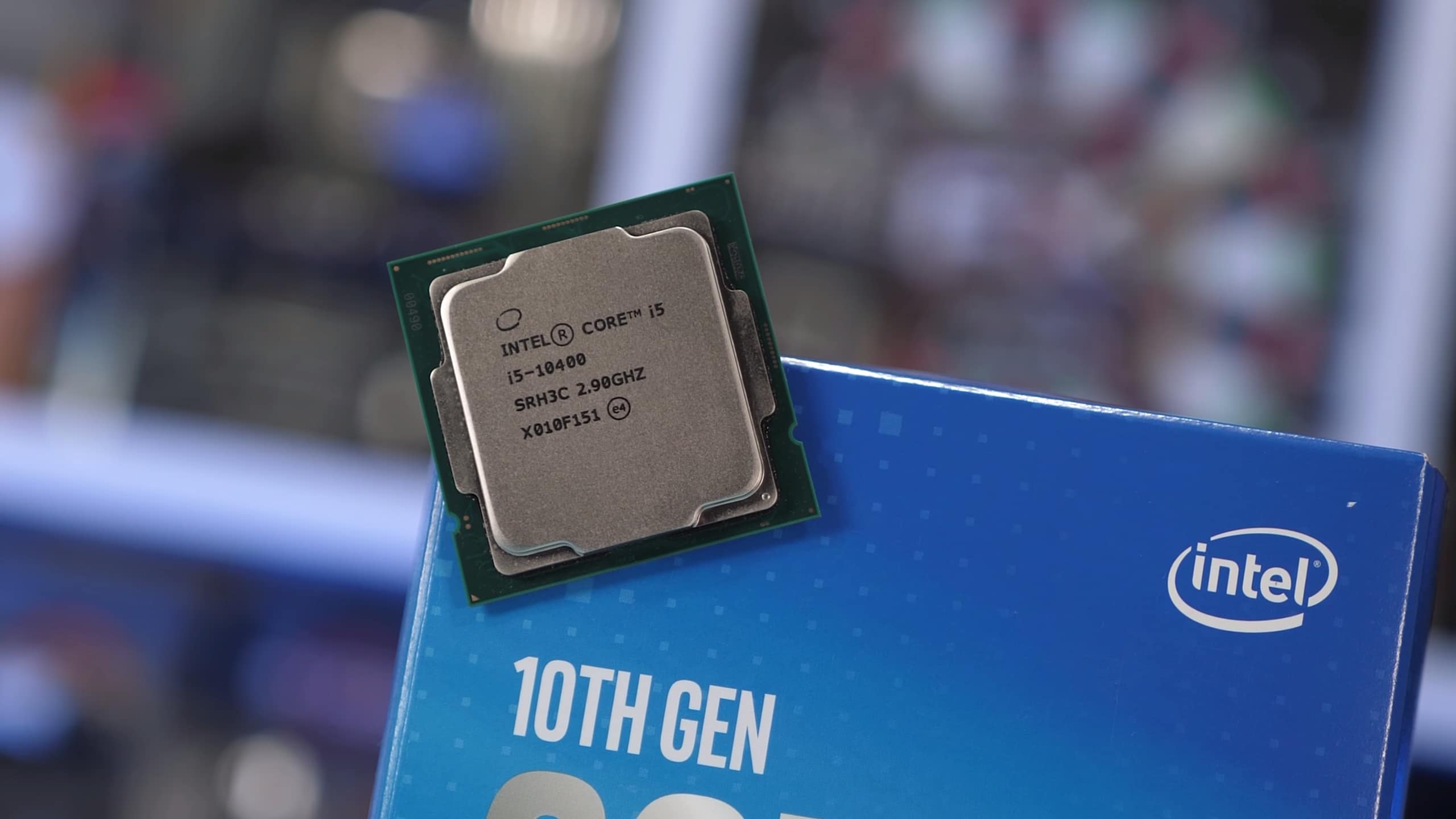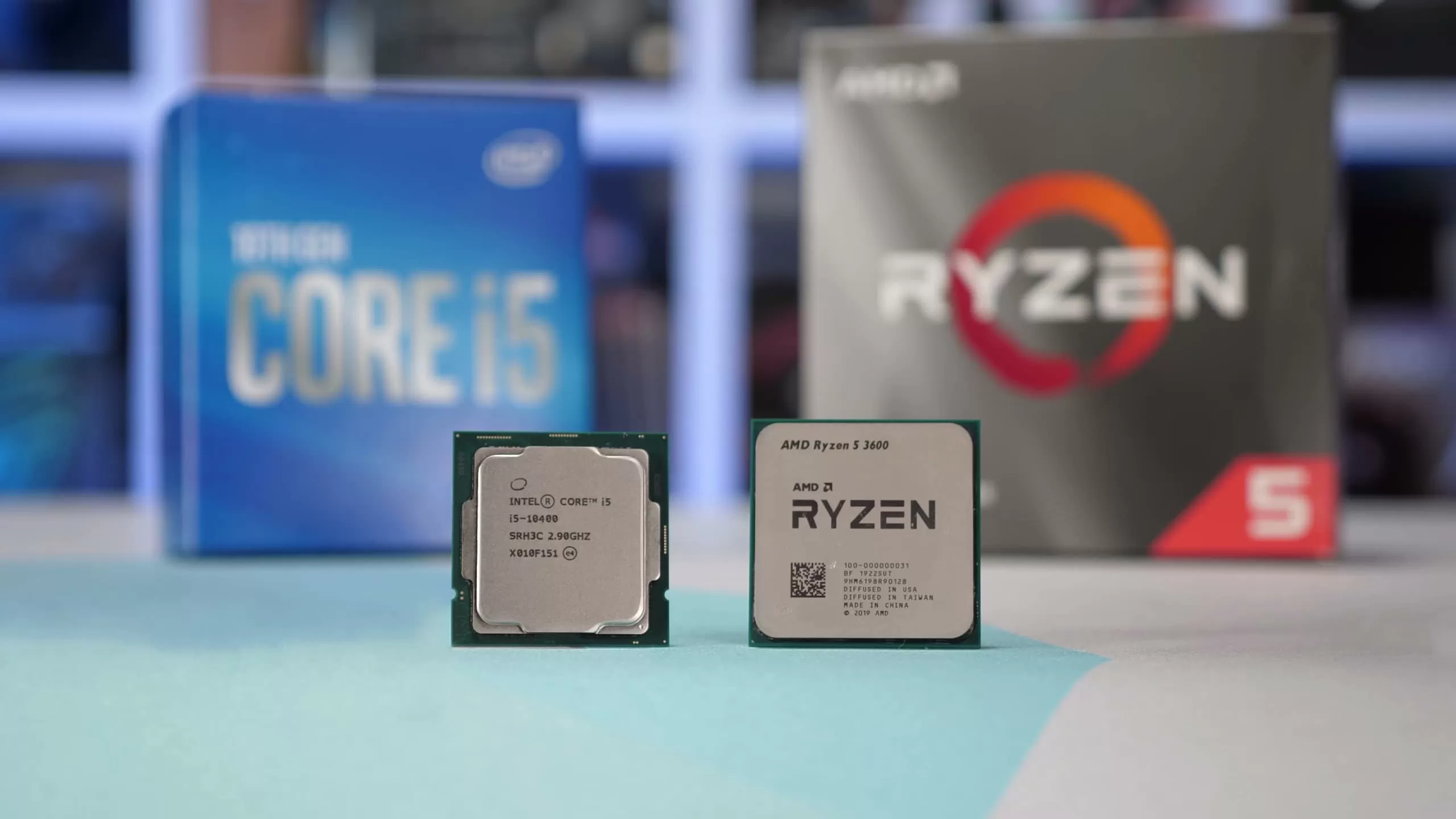Intel's new Core i5-10400 is a locked 6-core, 12-thread processor that operates at between 2.9 GHz and 4.3 GHz depending on the workload. The reason the base clock is so low relative to the i5-10600K is that the TDP rating has dropped from 125 watts down to just 65 watts. However, the vast majority of Z490 motherboards don't enforce the TDP limits.
We've had access to several new Z490 boards and only Asus seems to adhere to these limits with MSI, Asrock and Gigabyte all running without power limits with only one or two exceptions on mATX and Mini-ITX boards. That being the case, the typical out of the both experience won't be power limited and therefore we'll be testing the Core i5-10400 on a Z490 board with no TDP restrictions in place.
Since this is a locked part, we'll include a DDR4-2666 memory configuration as that is the maximum memory speed you'll get access to B and H-series motherboards.
Intel's suggested tray price for this chip is $182. There's also the 10400F variant of this chip that lacks integrated graphics for $157. Those prices may adjust in the coming weeks based on demand and how users perceive the 10400 to perform against the Ryzen 5 3600 which is usually sold around $175. So when it comes to pricing AMD is asking about the same kind of money for their base model 6-core, 12-thread processor, which does not have integrated graphics but comes unlocked and supports memory overclocking on all motherboards.
It appears as though Intel's already on the back foot against a tough rival, but we should probably take a look at the benchmark results before drawing any conclusions.
The Ryzen processors were tested on the Gigabyte X570 Aorus Master, 8th and 9th-gen Core processors were tested on the Gigabyte Z390 Aorus Ultra and the new 10th-gen Intel processors on the Asus ROG Maximus XII Extreme. All configs were tested with a GeForce RTX 2080 Ti, 32GB of DDR4-3200 CL14 memory and a Corsair Hydro H150i Pro 360mm AIO liquid cooler.
As noted earlier, the Core i5-10400 was tested with both DDR4-3200 and DDR4-2666 memory, using the same CL14 timings. Our test suite has been shortened on this review compared to the last few, having spent the last week looking at in-depth testing for the 10900K, 10700K and 10600K, we simply don't think the 10400 warrants us going over 30+ tests and you should be able to draw the same kind of conclusions regardless. With that said, we've picked key application and game benchmarks to look at, so here we go.
Benchmarks
Cinebench R20 multi-core goes first and right off the bat we see that memory speed doesn't impact these rendering workloads as the Core i5-10400 produces basically the same result using either DDR4-3200 or 2666 memory.
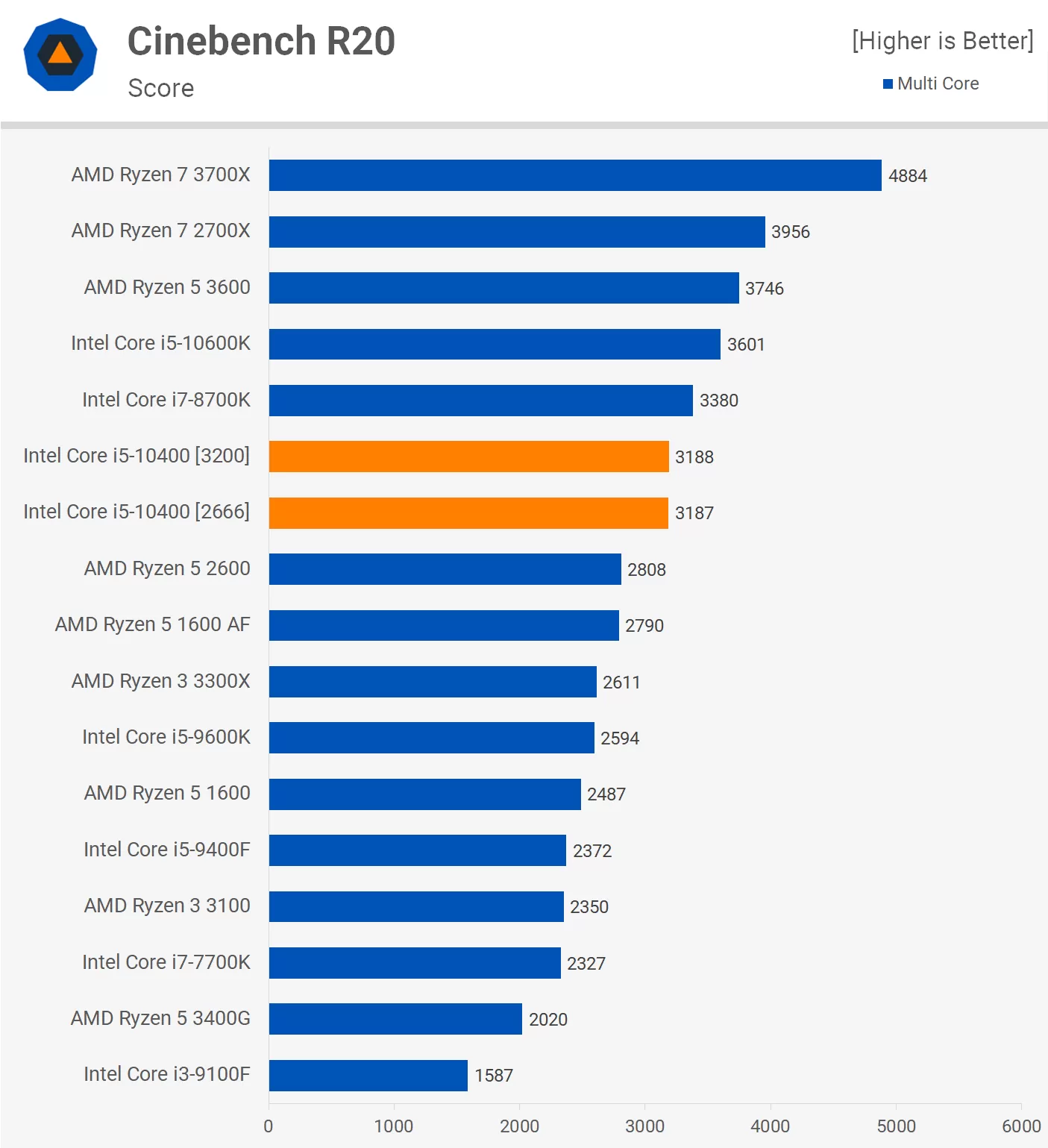
With just shy of 3200 points, the 10400 was 15% slower than the Ryzen 5 3600 and that doesn't bode well for the Intel processors application performance. Moreover, it was 14% faster than the Ryzen 5 1600 AF... too bad that part is no longer as inexpensive as used to, but still good for around $110.
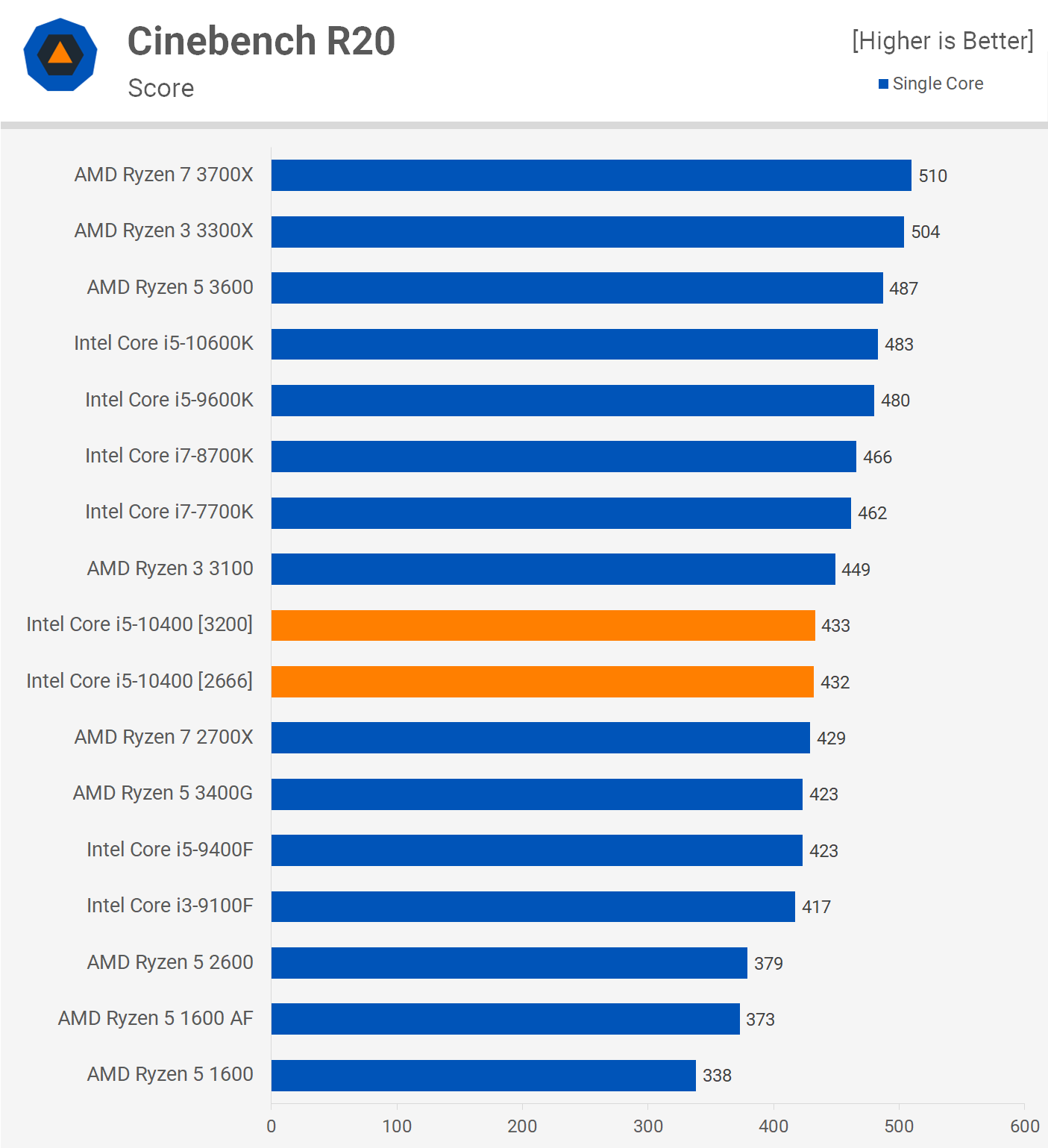
When it comes to single core performance, we see that at least in Cinebench the memory speed doesn't play much of a role. Ryzen 5 3600 was ~13% faster here and the 10400 comes in behind even the Ryzen 3 3100.
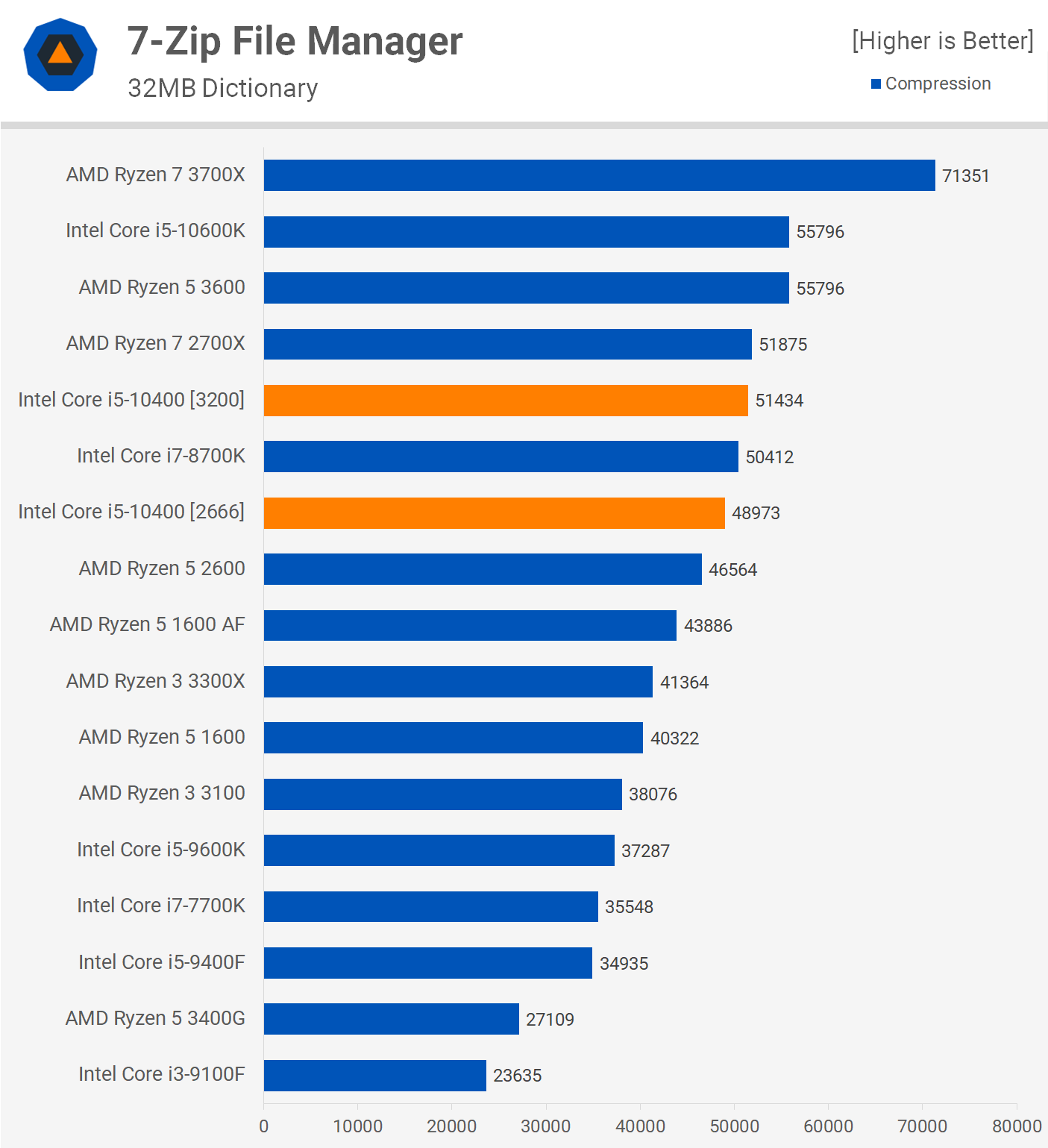
Moving over to 7-zip and here we're looking at a 5% performance boost for the 10400 when using the faster spec memory. Granted a 5% increase is pretty small for a 20% boost in memory frequency, but still that's more that what we saw in Cinebench. When using the same memory as the Ryzen 5 3600 the 10400 was 8% slower for compression work and then 12% slower with DDR4-2666 memory.
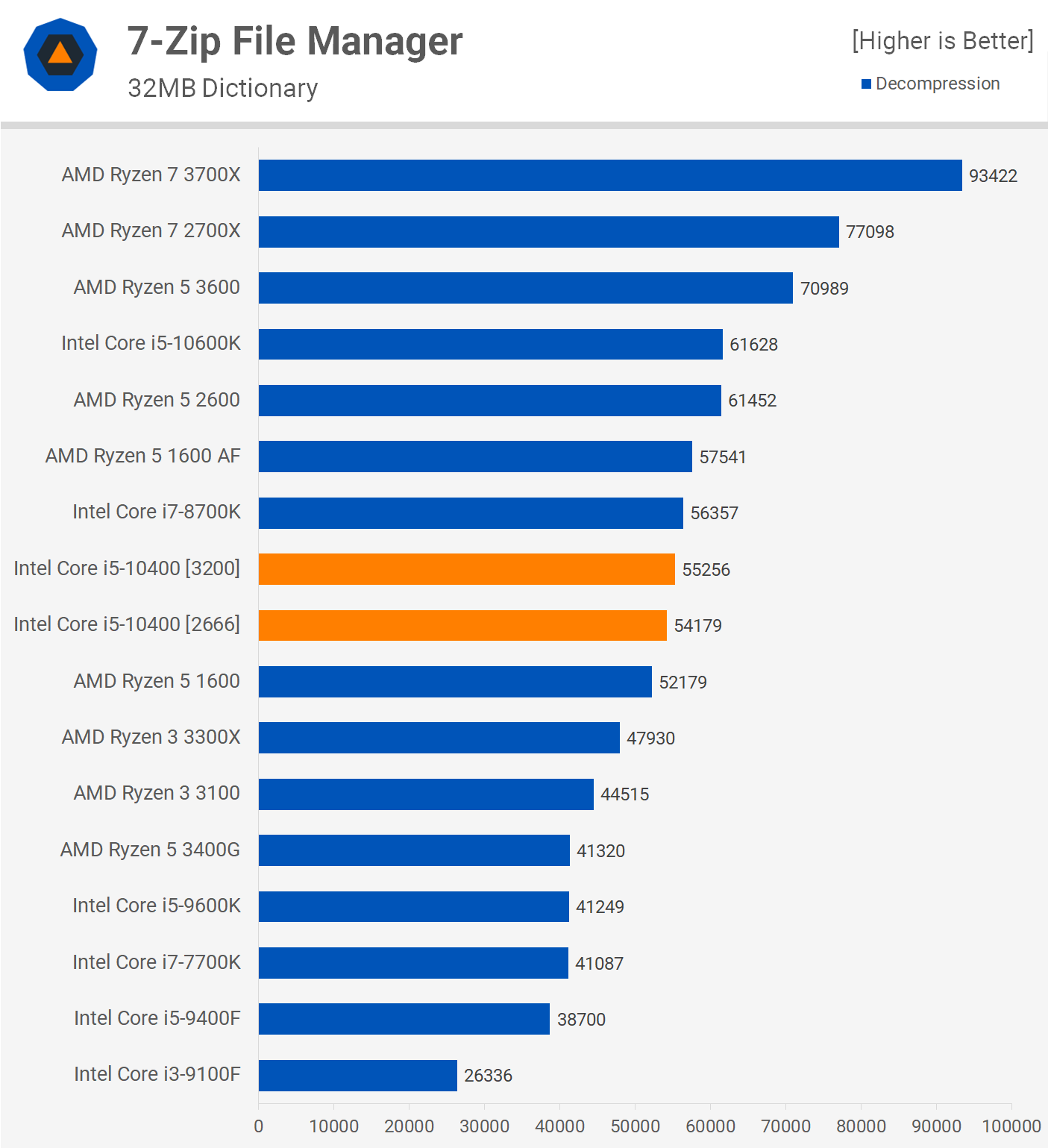
The margin widens when it comes to decompression performance and here the 10400 was at least 22% slower than the 3600. In fact, the 10400 was slower than even the 1600 AF.
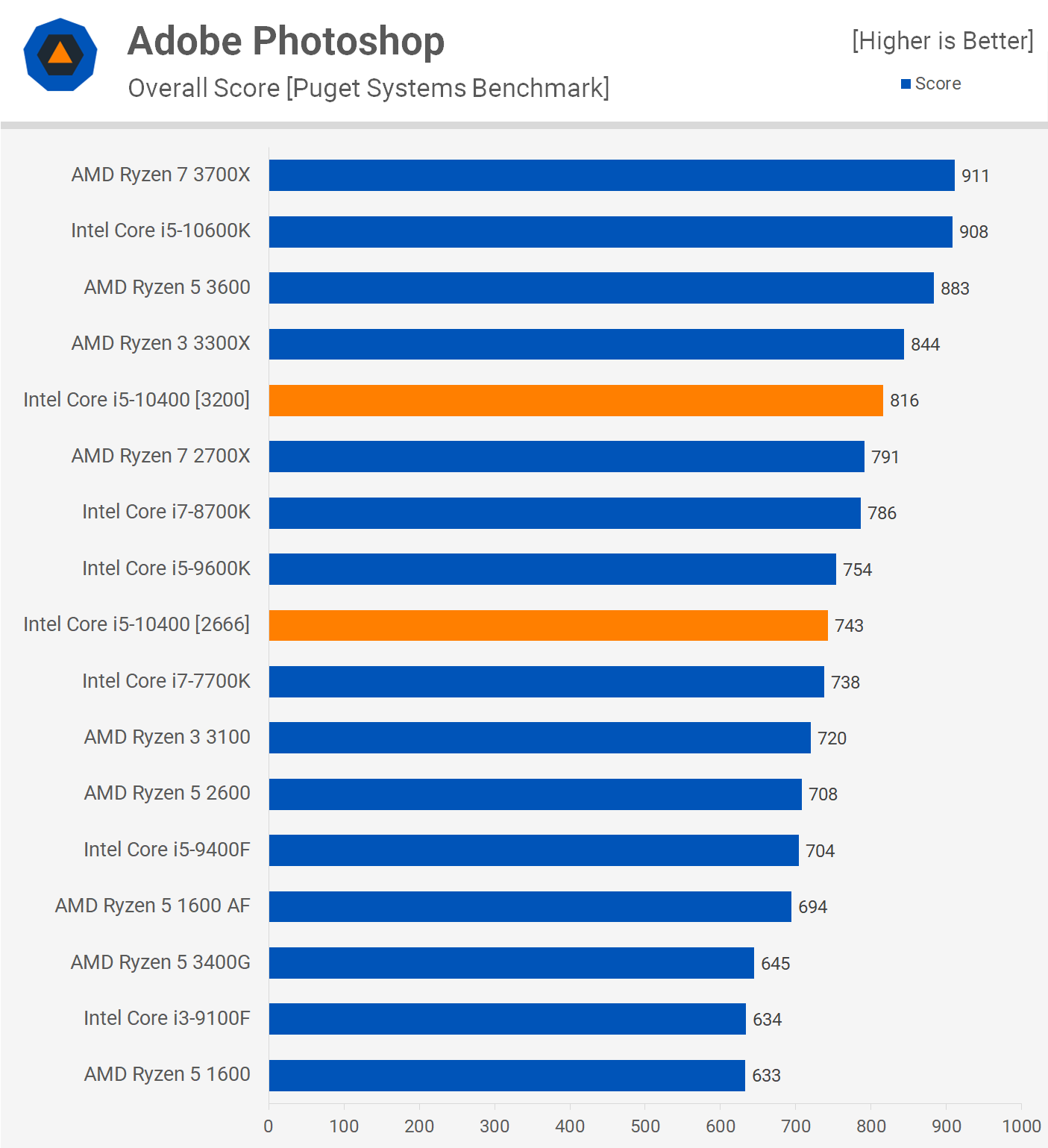
Next up we have Adobe Photoshop which prefers single core performance and interestingly we do see a 10% performance uplift for the i5-10400 when using DDR4-3200 memory over DDR4-2666, so that's significant.
It also means while the Ryzen 5 3600 is 8% faster than the 10400 when using the same speed memory, when forcing the 10400 to run at the 2666 spec on B or H-series boards the 3600 is a whopping 19% faster in the Puget Systems Photoshop benchmark.
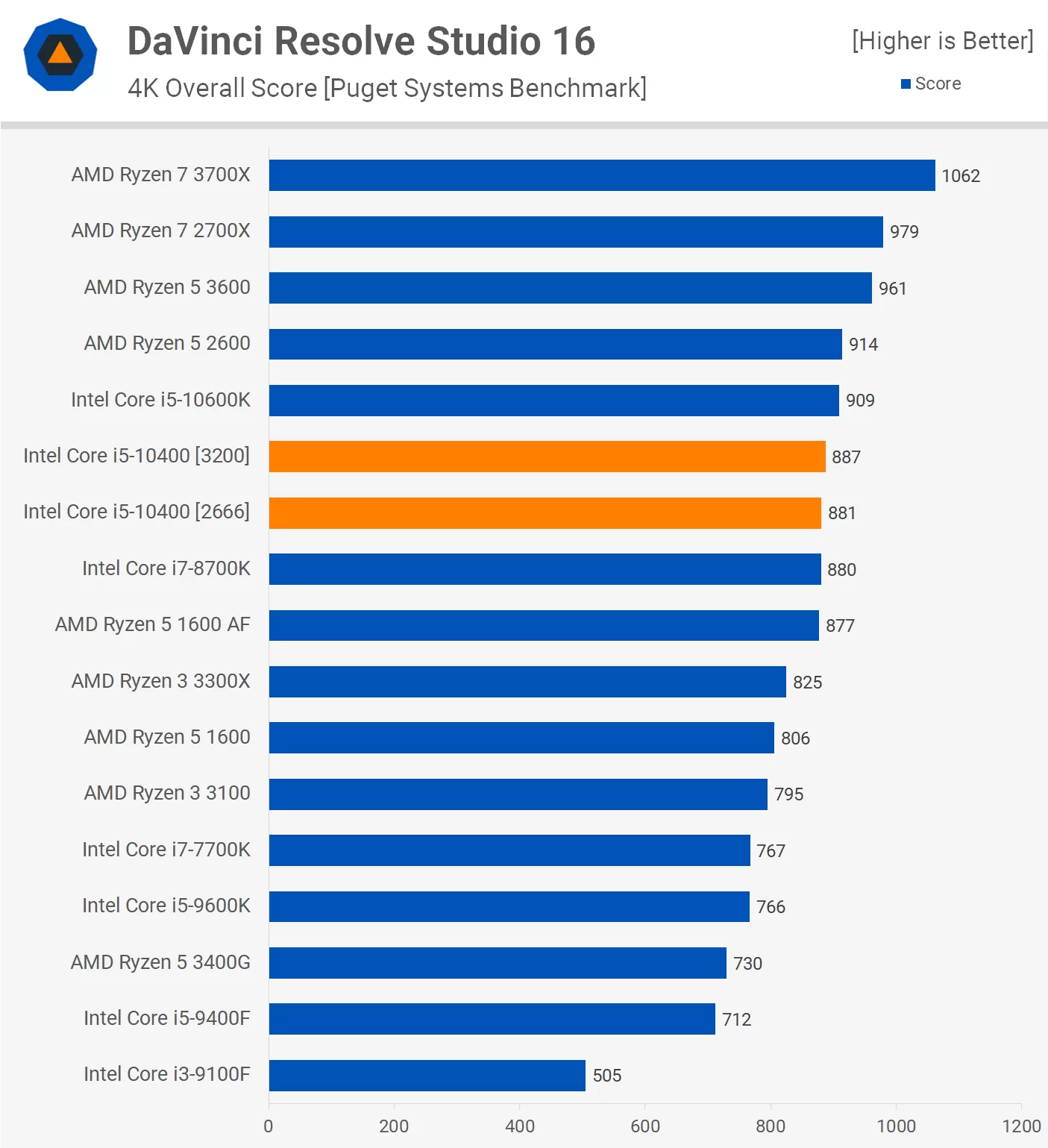
Moving over to DaVinci Resolve Studio 16, we see the faster memory has little influence on performance. When comparing the DDR4-3200 configurations the Ryzen 5 3600 was still 8% faster, not a massive margin but for a CPU that generally costs less, that's a good result for AMD.

Wrapping up the application testing with Blender we find that the Ryzen 5 3600 is 8% faster than the 10400 when using DDR4-3200 and 10% faster when using DDR4-266 memory.

When looking at power consumption we find that while the Ryzen 5 3600 isn't miles better than the 10400, it does consume roughly the same amount of power for around 10% better performance.
Gaming Benchmarks
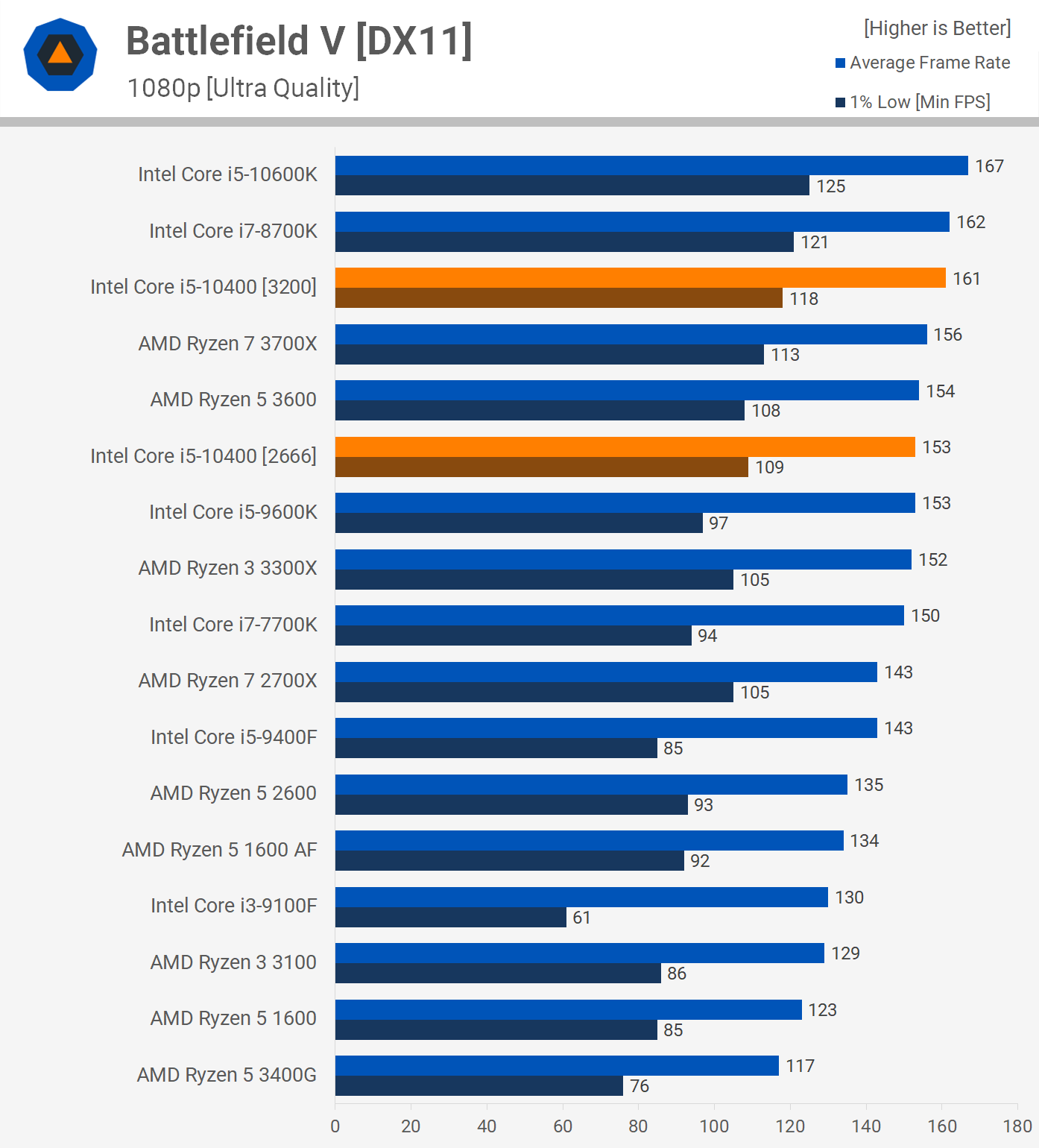
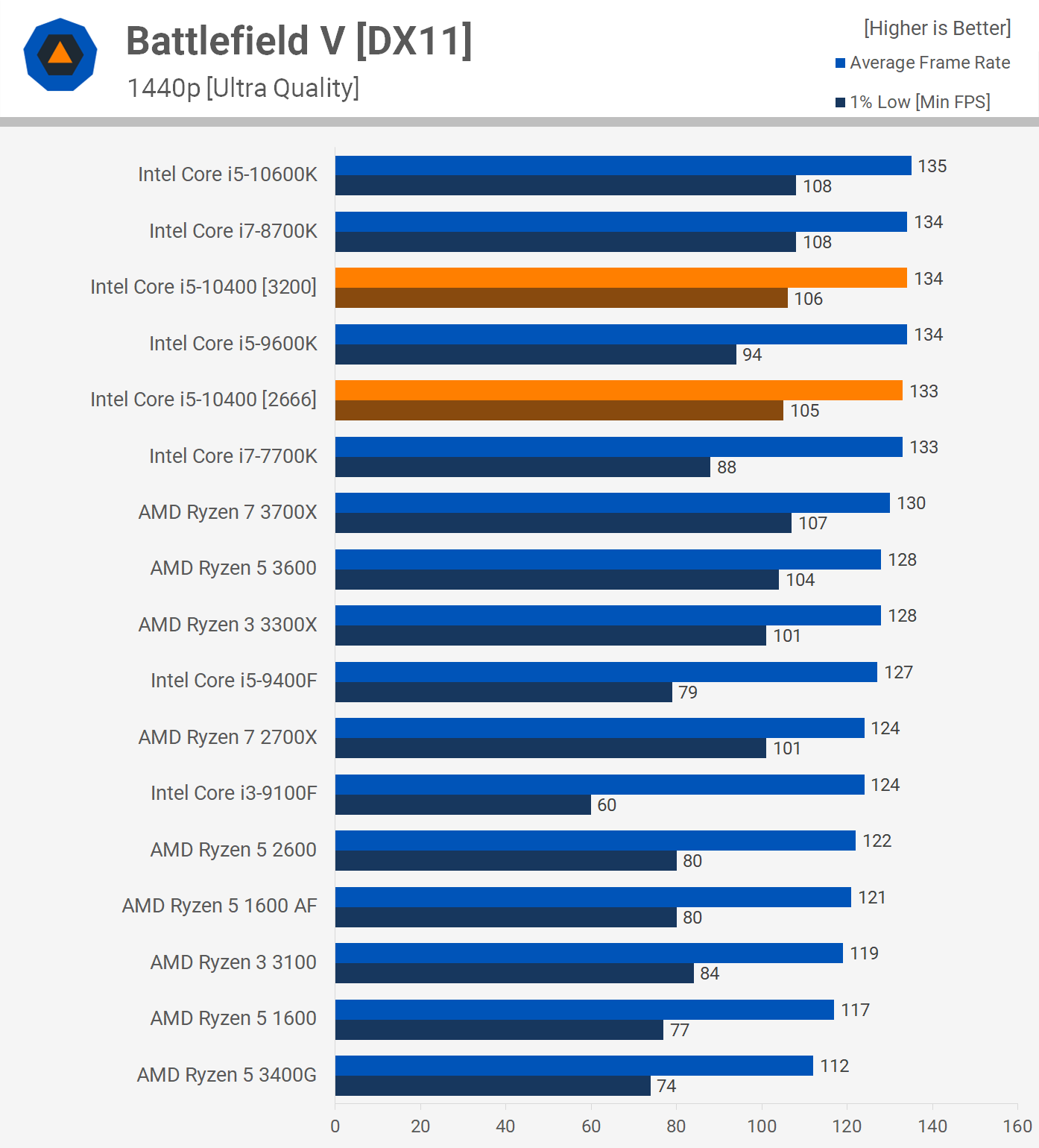
Battlefield V shows the Core i5-10400 performing very well in games, and with the same-spec memory it roughly matches the Core i7-8700K, making it around 5% faster than the 3600 when comparing the average frame rate. However, when paired with a B or H-series board, the 10400 will match the 3600 in this title.
Jumping up to 1440p reduces the margins for the most part and the 10400 performs roughly the same using either DDR4-2666 or 3200 memory.
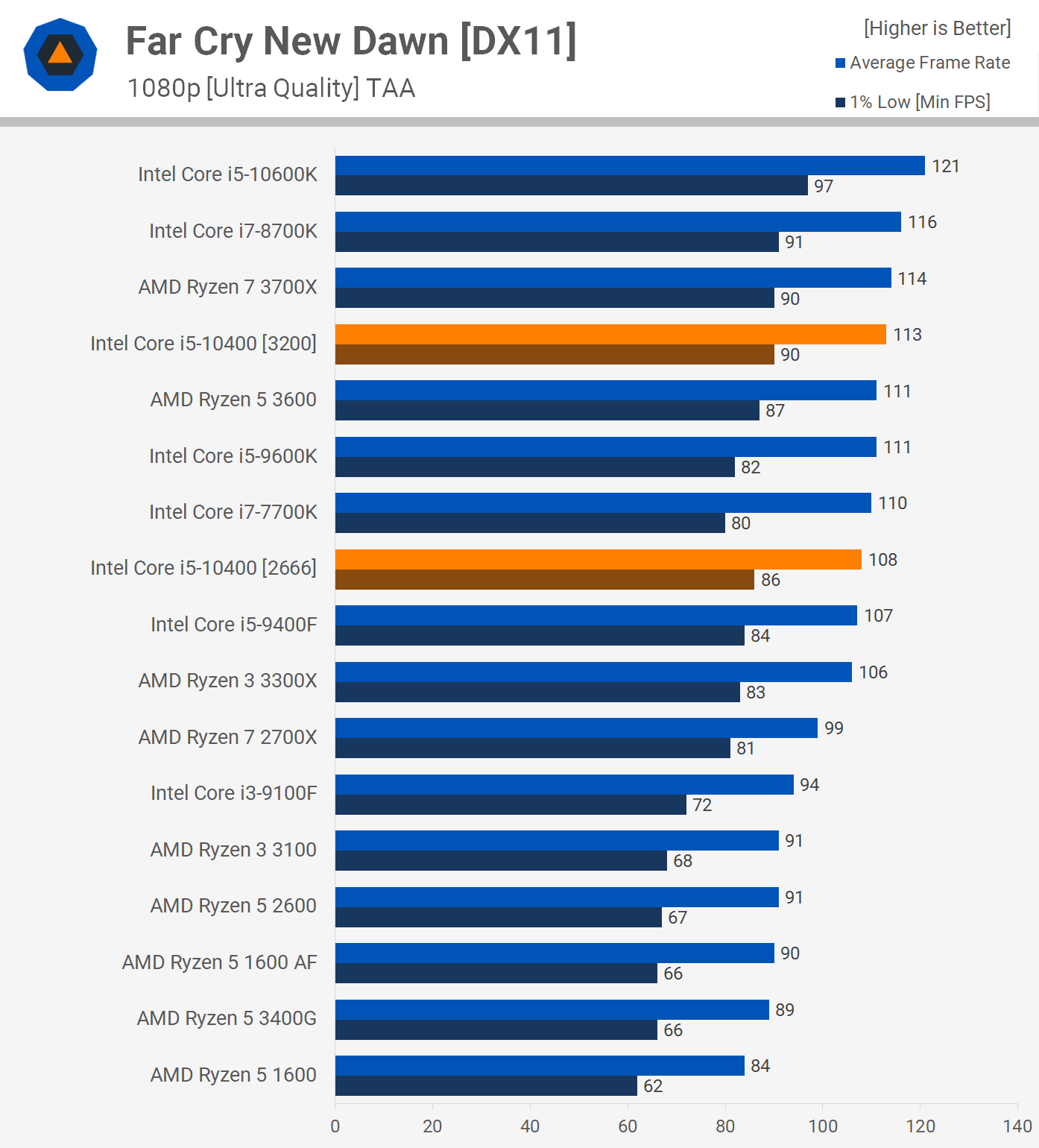
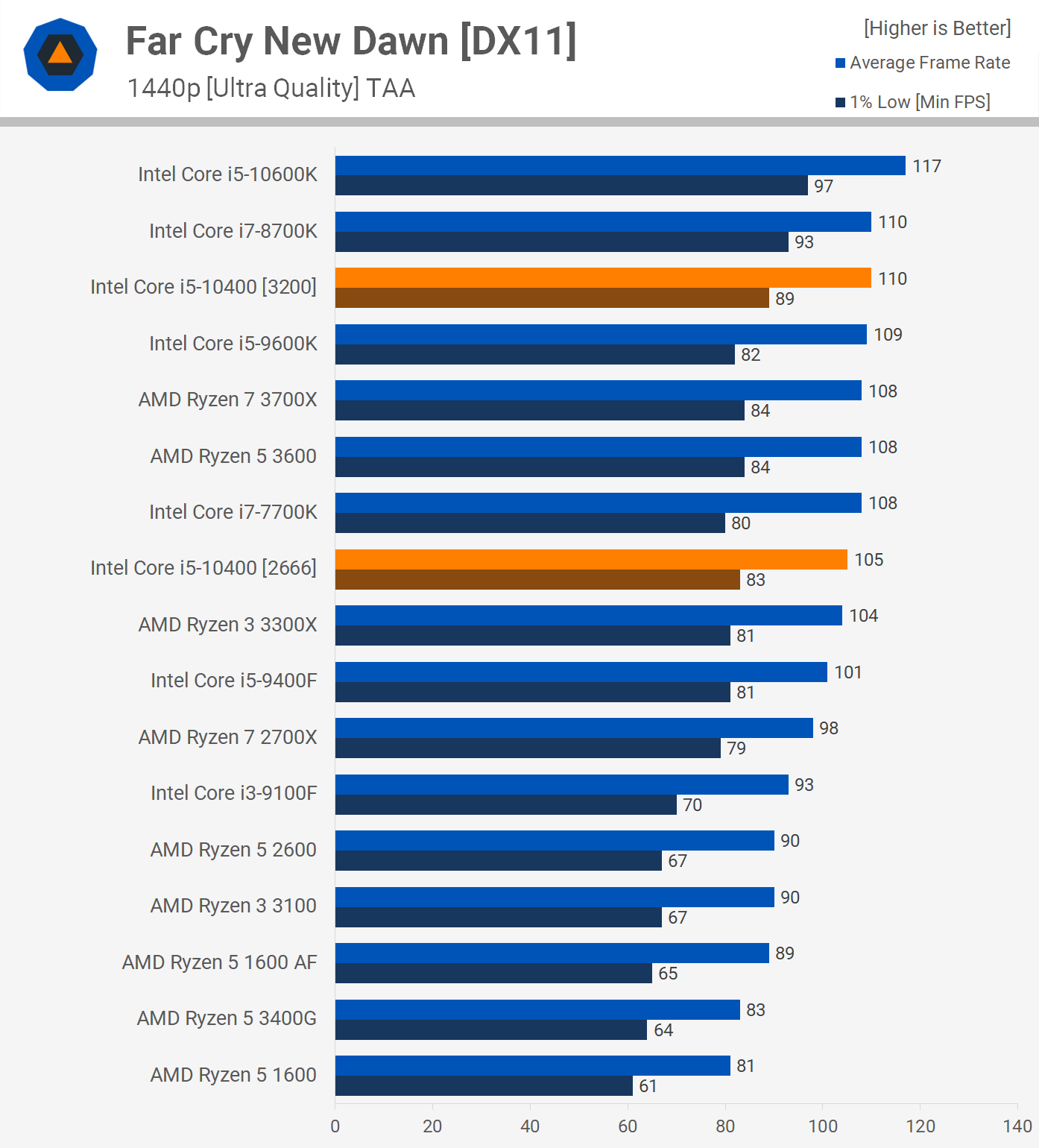
Far Cry New Dawn typically shows us a worst case scenario for Ryzen, yet the 10400 is shown to match the 3600 here when using the same DDR4-3200 memory. Using DDR4-2666 sees the 10400 slip a little behind but just barely.
Moving to 1440p sees the margins remain much the same and it would be impossible to tell the difference between the 10400 and 3600, even when using slower DDR4-2666 memory.
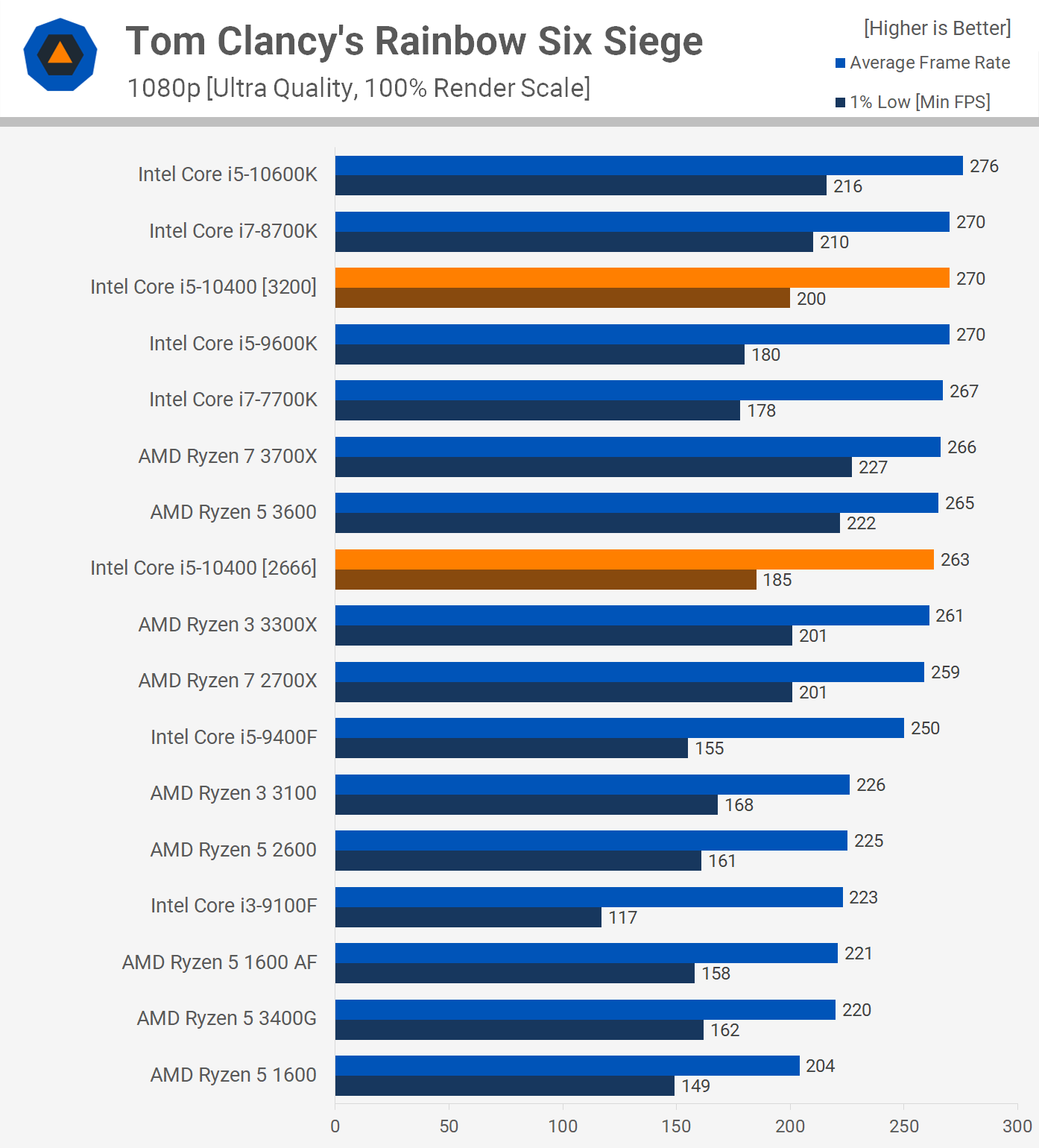
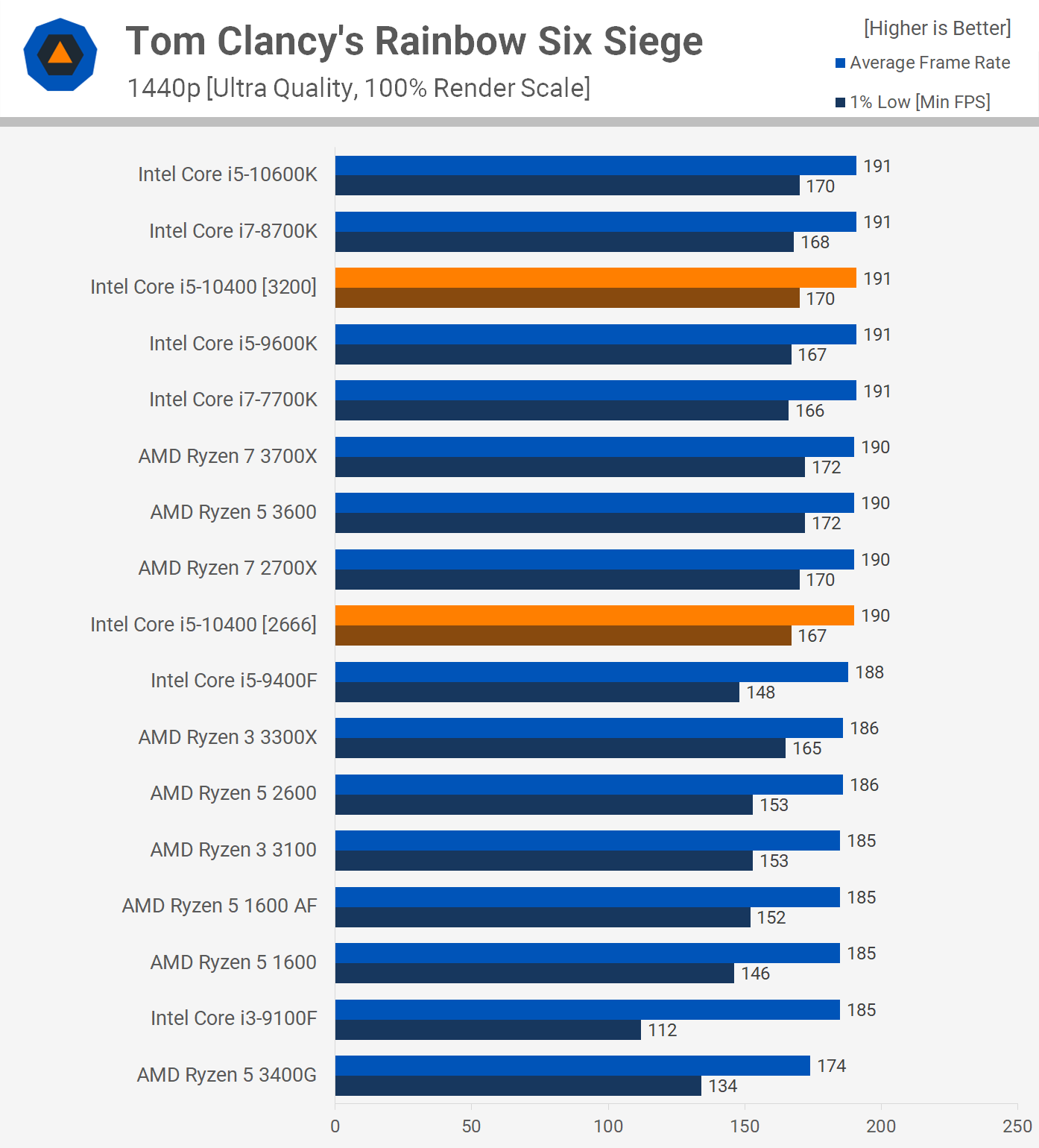
The Ryzen 5 3600 performs very well in Rainbow Six Siege, particularly when looking at the 1% low result. Here it was 11% faster than the Core i5-10400 and 20% faster when comparing the Intel processor with DDR4-2666 memory. It's important to note that worst case the Intel CPU was still spitting out over 180 fps at all times in our test, so how much that 20% margin matters here is debatable.
Moreover, when jumping up to 1440p which we feel is a more realistic scenario with an RTX 2080 Ti, the 10400 and 3600 are indistinguishable in terms of gaming experience. We're also looking at virtually no difference between the DDR4-2666 and 3200 configurations.
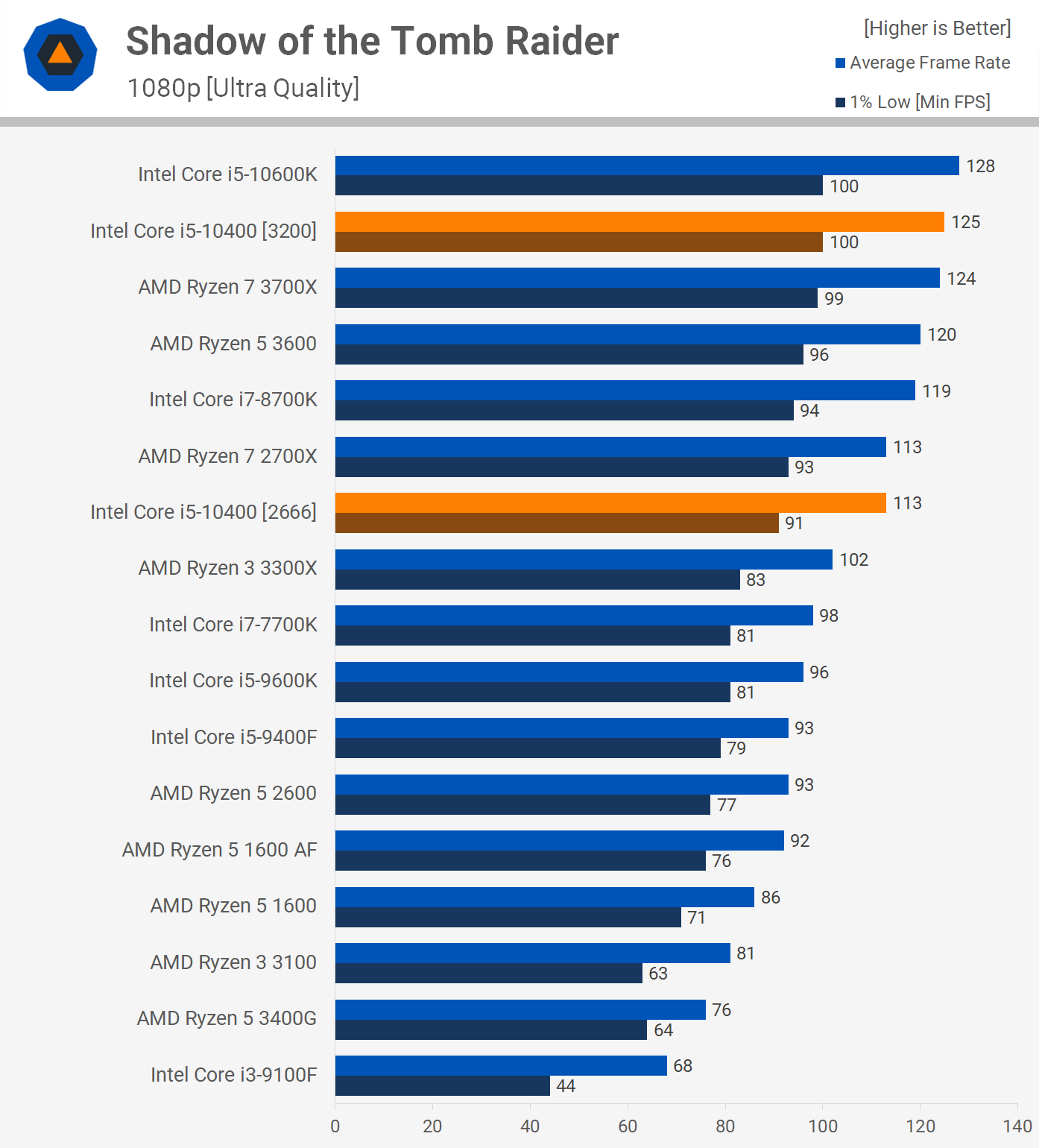
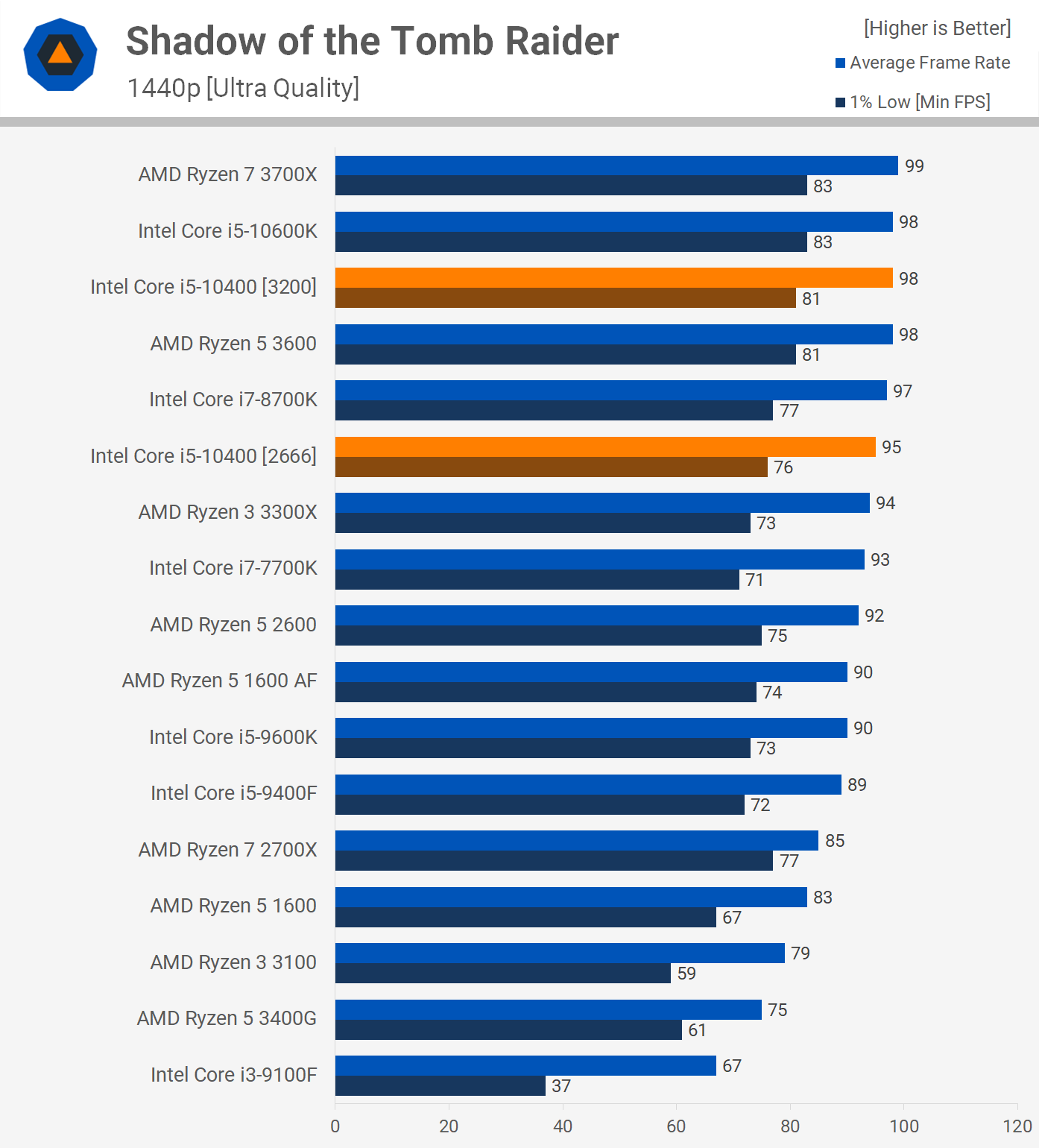
We see a rather significant difference in Shadow of the Tomb Raider performance when comparing DDR4-3200 and 2666. Here the faster memory spec boosted the average frame rate by 11% and the 1% low figure by 13%.
As noted in the past, Shadow of the Tomb Raider is very CPU demanding, particularly the open world section we use for testing and on that note, just to be clear, these results haven't been recorded using the built-in benchmark which we feel isn't CPU demanding enough and not a fully reliable way to test this title. Instead we're using OCAT to measure in-game performance at a later section of the game, about 4-5 hours into the campaign.
Shadow of the Tomb Raider is probably the most CPU demanding title we test with, it's certainly right up there with Battlefield V. So it's interesting to not only see a big difference between the DDR4 memory configurations, but to also see the Ryzen 5 3600 trailing the Core i5-10400 by a 4% margin and beating it when using DDR4-2666.
Granted, as we move to 1440p the results become far more GPU bound and as a result the 3600 and 10400 deliver identical performance when both are configured with DDR4-3200 memory. Moreover, the 2666 configuration is now just 3% slower when comparing the average frame rate.
What We Learned
Is the Core i5-10400 worth the $182 asking price? Probably not, but hey, it's competing against the extremely aggressive and awesome Ryzen 3600.
In our opinion, the key issue for Intel is AMD's aggressive pricing. Although the Ryzen 5 3600 should be the slightly more expensive CPU at ~$200, for the past few weeks it's been selling for just $175 (or even less, as of writing).
As you just witnessed, when it comes to gaming performance the Core i5 processor is roughly on par with the 3600, while for productivity tasks AMD's offering is often up to 10% faster while consuming a similar level of power. If you will be adding a graphics card to your build, then the slightly less expensive i5-10400F should prove a better value. Thus, you could argue the price difference between the AMD and Intel processors is a wash.
But when you factor in the platform and board cost, it's a bleaker picture for Intel. A decent Z490 board like the Tomahawk will set you back $190, whereas the B450 Tomahawk costs just $115 – a $75 price disparity. Both CPUs come with box coolers and neither is particularly impressive. But with a good motherboard, the i5-10400 will end up costing more if you want to take advantage of faster memory. There are cheaper $150 Z490 motherboards but they're bloody awful, with weak VRMs and lackluster feature sets, you 100% shouldn't buy them.
Assuming decent Intel B460 motherboards can match the B450 Tomahawk in terms of quality and features, that'll see the 10400 cost about the same as a Ryzen 3600 rig but limited to DDR4-2666 memory, where it was typically slower than the 3600 in games, and up to 20% slower in applications.
All in all, the Core i5-10400 is a good CPU, it just has it tough competing with the Ryzen 5 3600 which is a better value option for most. If you happen to end up with a 10400, you'll be happy with the performance.
As for what the immediate future holds, we'd bet the Ryzen 5 3600 will keep selling for $175 or even less, with rumors of a boosted 3600XT coming soon. For Intel to compete in terms of value, it will need to drop the i5-10400 down to ~$150 and of course upcoming Intel B460 boards will have to prove their worth as well. Opening up memory overclocking would certainly help Intel's case as well, this is something they absolutely need to do at this point.
